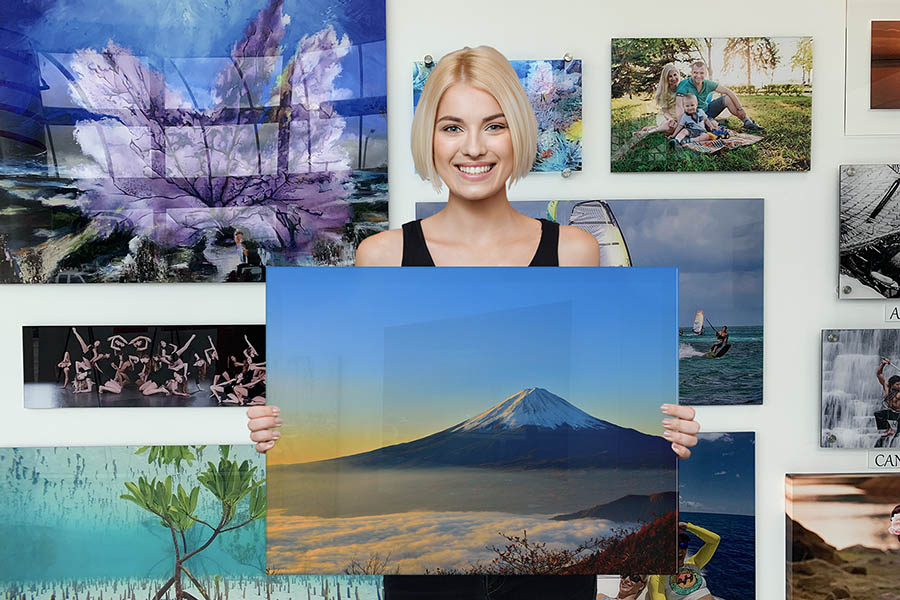
Photo Print
Photo Printing
Today, we take more pictures than ever. This year, it is estimated that billions of people with their smartphones will take 1.2 billion images. Almost nothing, right?
However, while many of these images will be shared on social networks, many others will be forgotten. Some good selfies will appear before your eyes when you slide your finger to the left or right, but few photos will make their transition to the physical world, becoming memories printed on paper, canvas, etc.
And although it makes no sense to fight for progress, we should also pay attention to the value of an impression. We may no longer print each photo by default, but this may be good.
Photo Print Technological
Now it’s about quality instead of quantity, and the images we choose to print deserve the best treatment. There has never been a better time to photo print than now, thanks to technological advances in digital cameras and printers.
We have heard many times, and not only in photography, that the impression is dead or dying, right?
Although a specific type of impression has undoubtedly diminished, this does not mean any tragedy. Prints used to be the only way we had to see our photos (except the slide film and projector use). We left our movie at the establishment and picked it up 24 hours later, not because it was a better system, but because it was all we had.

Photos
But when printing was the norm, many photos were lost and forgotten (and some were found again). Most photos ended up in albums or shoeboxes that would collect dust until the day of some movement. In addition, many fewer photos were taken. In the year 200, for example, Kodak announced that 80,000 million photographs had been assumed that year.
That sounds like many photos, and the truth is that it was a great milestone at that time, but now 1.12 billion more photos are made, until reaching 1.2 billion in 2017.
With so many photos taken, it is common that few images are printed. After all, each print costs money, so people will not print 1.2 billion photos (maybe a tiny fraction of that amount is published).
Photography and Photo Print
In addition, the purpose of the impression (and often of taking the Photo Print in the first place) was to share that memory with another person. Now, however, sharing images electronically is also much more convenient.
But people still love impressions. In addition, instant photography has undergone a major resurgence in recent years.
Polaroid Original has built a complete brand with cameras and Fujifilm Instax movie packages, making up six of the top ten best-selling photography products in Amazon’s last holiday season.
The digital and printed world are not enemies.
The digital world has also changed how we print; there is no going back. The number of standard 4 x 6-inch photo Prints is expected to decrease to 39,000 million this year, compared to 47,000 million in 2014, according to information provided by Key Point Intelligence to Digital Trends.
Design Photography
While this may be bad news for the photo lab, it does not mean the bane of the art of printing. Key Point Intelligence expects the downward trend to slow and remain at around 36,000 million copies in 2021.
Also, despite what people perceive as a decrease in print media, the number of magazines produced has remained constant since 2008, according to 99U.
Any publication’s circulation may be smaller, but each one is of higher quality and more specific. From design to photography and paper selection, everything has improved.
Quality Prints
Instead of regretting the decrease in quantity, we should celebrate the opportunity to produce higher quality Photo Prints, as digital technology offers us. This new era has provided us with new technologies and ways to produce high-quality prints. Today we have the tools to make better impressions than ever.
With a $ 600 photo inkjet printer on your desk, you can produce a quality 13 x 19-inch print in your home that competes even with what a professional laboratory can do.
In the past, however, you should have turned part of your house into a dark room to be able to reveal your photos. Of course, many professionals did precisely that, but the system was beyond the reach of most fans.
No one can deny that the digital era has made professional printing more accessible (not to mention the amount of water and hazardous chemicals needed is reduced).
Photo Backup
Printing can be more secure.
Even if you run out of wall space, printing can be essential to your image file.
In addition, JPEG, the standard of compressed images, is beginning to give way to the new HEIF format. Optical discs such as DVDs used to be the gold standard of photo backup, but now they have almost disappeared. External hard drives have gone through several physical connection types, from USB to FireWire to Thunderbolt, and several generations of each.
In short, there is no guarantee that tomorrow’s computer can read the photos you take today unless you constantly modernize your digital files. Cloud services can help with this, but they also do not guarantee that the companies running them will always remain.
An impression, however, can last more than 100 years when stored correctly (and yes, you can make this type of printing at home). It is not a replacement for digital backups, but for your most important photos, a print offers a perfect way of conservation, at a minimum.
It is about your art.
High-Quality Photo Prints
Seeing a high-quality print of an image you made can be fascinating
Printing for archival reasons is logical, but the real reason you should start printing is rather emotional. When done correctly, seeing a high-quality print of an image you made can be fascinating.
Something about keeping a final impression on your hands is infinitely more satisfying than seeing a photo on a screen, especially a pocket. It also serves as a tangible and permanent product of your work, a monument to time and the effort you put into creating it.
So take a trillion photos. Forget billions, but print one and do it right.
Author Profile

Latest entries
- December 30, 2023Photo PrintsDigital Art Laminated in Glass or Acrylic: Why Galleries and Artists Prefer the Shimmering Shield
- December 30, 2023Photo PrintsDPReview’s Year in Review
- October 5, 2023Photo PrintsAI Photo and Decoration: The Future of Displaying Memories
- October 5, 2023Photo PrintsHome Decoration: Elevating Interiors with Glass Photo Prints
